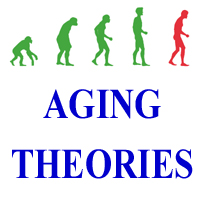A Reply to Алиса’s comment on the book: Anti-Aging Medicine: How We Can Extend Lifespan and Live Longer and Healthier Lives.
There are two main biological aging theories: non-programmed aging and programmed aging.
There is wide agreement among gerontologists that aging has in some way been determined by the evolution process. Aging and internally determined lifespan, like other evolved traits (such as adult height), varies somewhat between individual members of a species and to a much greater extent between species. Consequently, evolutionary mechanics theory, or the theory describing the evolution process, essentially determines aging theories. Although there is wide agreement regarding the existence of Earth-life evolution there is still substantial disagreement regarding the mechanics of evolution.
Everybody also agrees that age-related diseases like cancer and heart disease have a common cause (age) that causes most cases of age-related diseases and the more universal age-related conditions. There is also wide agreement that each age-related disease has a different immediate cause. Cholesterol causes some heart disease, inappropriate cell division causes cancer, etc. The trillion-dollar question for more than 160 years has been: Is there a treatable common cause of age-related diseases and conditions? Is some single upstream biological mechanism regulating the multiple immediate-cause mechanisms resulting in the multi-species aging observations?
Darwin’s evolutionary mechanics concept, as we all learned in high school, is very individual-oriented. An inheritable mutational change occurs in a single individual. If that change causes descendant individuals to produce more adult descendants, it propagates in a population. This idea explains the vast majority of organism traits.
However, there is wide agreement that aging does not help but hurts the ability of individual mammals to produce more descendants leading to an obvious question: Why didn’t evolution produce internally immortal organisms. Unfortunately, despite more than 160 years of effort no one has produced an aging theory that even semi-plausibly explains multi-species aging observations while remaining completely compatible with Darwin’s mechanics.
This eventually led to the development of population-oriented evolutionary mechanics theories in which evolution is driven by the success (survival and growth) or failure (extinction) of populations of a particular species. Genetics discoveries support this view.
Modern Non-programmed aging theories propose that aging only weakly negatively affects populations even though it is catastrophic as seen from an individual’s viewpoint. This is obviously true. Mammals (including humans) have evolved to their current state despite aging. This concept leads to the idea that each of many different maintenance mechanisms that act to prevent each of the many age-related diseases and conditions only evolved the effectiveness needed to produce the lifespan needed by a particular species population. Therefore, there is no treatable common cause of agingmanifestations. This idea fits well with the existing medical paradigm.
More recent programmed aging theories suggest that aging, in addition to having little negative effect, actually produces a net evolutionary benefit for a population and that therefore organisms evolved biological mechanisms that purposely limit their lifespans. We possess what amounts to a biological suicide mechanism, which represents a treatable common cause of the age-related diseases! Anti-aging medicine including generally delaying aging (lifespan extension) is possible.
There is still major disagreement among gerontologists and medical researchers on this issue. As described in the book current science greatly favors programmed aging but non-science factors favor non-programmed aging. As described by Алиса, some gerontologists and many medical people still see programmed aging proponents as lacking “respectability” and interfering with “serious” research. However, serious, substantially funded research efforts based on programmed aging are now underway by organizations such as Alphabet Calico, AbbVie, and NIH. Gerontology journals increasingly accept pro-programmed aging articles and major textbooks on aging include programmed aging concepts. Programmed and non-programmed theories suggest very different biological mechanisms are ultimately behind age-related diseases so this issue is critical to research.
There have been few attempts to disprove any of the multiple population benefits of aging or to disprove the specific supporting evolutionary mechanics theories such as evolvability theory. Objections are usually based on the idea that it is “impossible” that the objector’s chosen evolutionary mechanics theory (incompatible with programmed aging) could be incorrect.
So Алиса if you (or anyone) has specific scientific arguments against the pro-programmed aging arguments summarized in the book (or in the cited literature) please post a summary and links to applicable journal articles.


 The situation regarding the programmed vs non-programmed aging controversy in the commercial world (doctors, patients, pharmaceutical companies) is very different from
The situation regarding the programmed vs non-programmed aging controversy in the commercial world (doctors, patients, pharmaceutical companies) is very different from